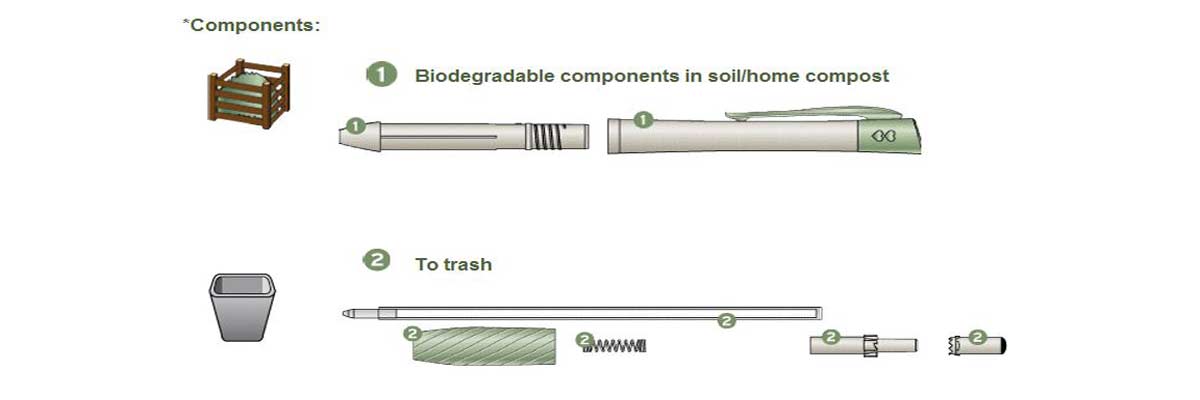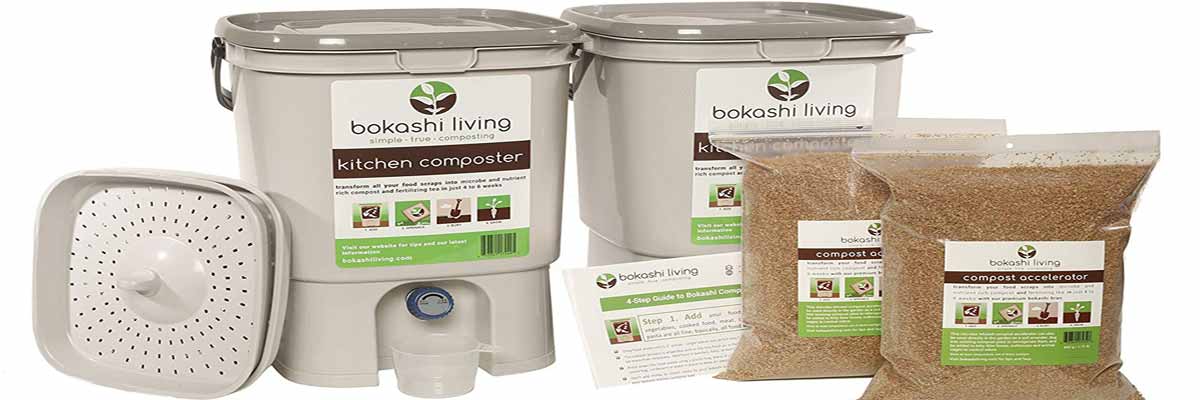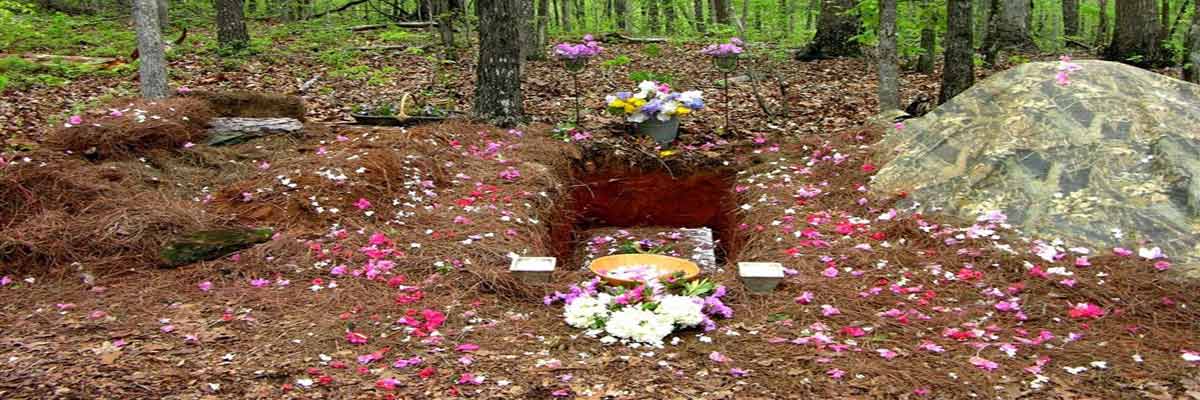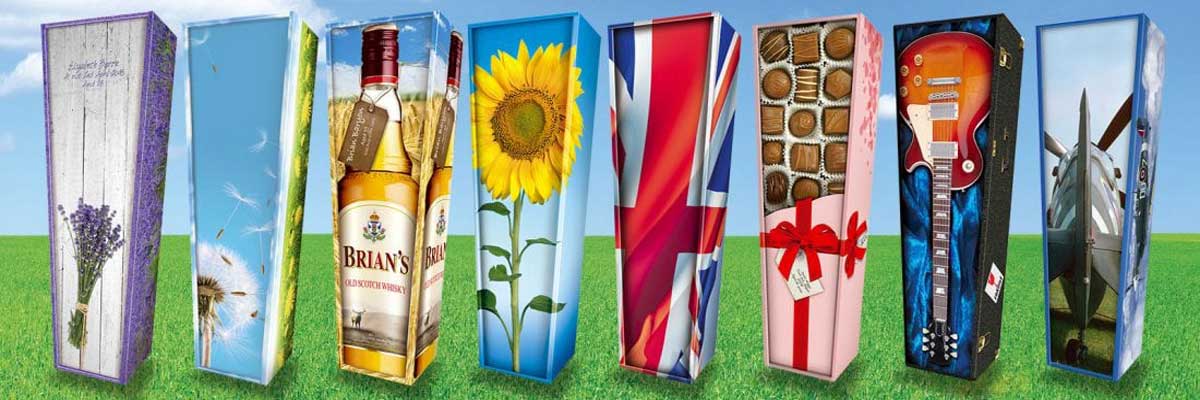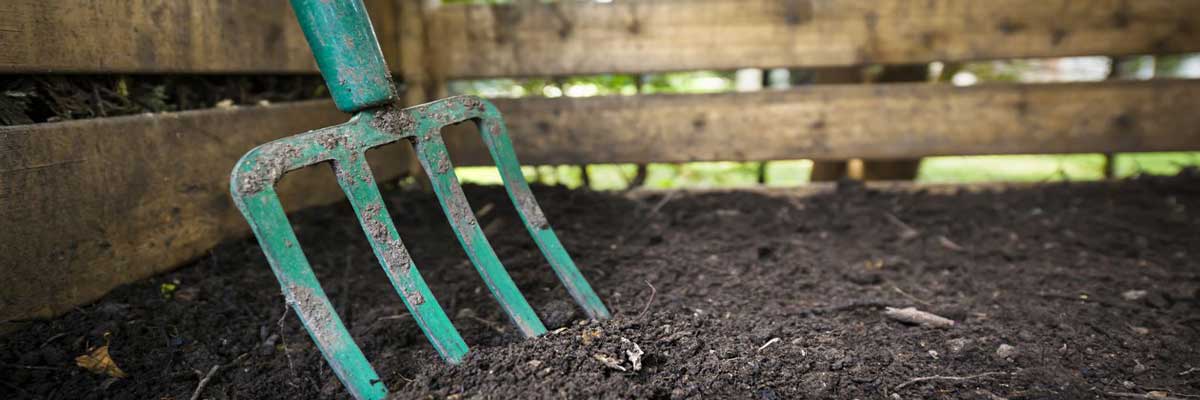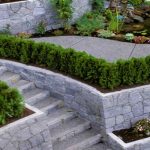Paper Mate Pens – Now with Less Waste…
Paper Mate sent me a few of their new pens and mechanical pencils to try out in honor of Earth Day. Now while I don’t think that compostable pens are the solution to the world’s problems – I guess I have to give credit to companies for trying to reduce waste and come up with solutions to our overflowing landfills.
The pens work just as well as the normal Paper Mate varieties, I’m a blue ink kind of guy. They’re also very comfortable, but that comes at the expense of a non-compostable grip. The ink hasn’t run out yet, but when it does, I’ll throw it in the bottom of my composter and see what happens. It’s supposed to take a year to break down, but with the generous heat from my food waste-leaves-grass combo, maybe it’ll take less time.
Just don’t forget to break the pen down before composting. There are many non-compostable parts that still need to be removed.
Bokashi Composting: The Urban Solution For Organic Waste?
With Spring so close I can barely stand to wait, I’m making plans for the garden, ordering seeds, and getting ready to reorganize my compost pile. See, during the winter months I’ve been reading up on what an absolutely shitty job I’ve done with my current compost layout. Sure, it’s better than nothing, but I could be getting my food and yard scraps to break down much faster with a bit of proper setup.
Anyways, while continuing this research, I came upon a post over on CleanTechnica discussing the composting technique called Bokashi. Basically, it’s a high-speed breakdown process that takes advantage of anaerobic mirobes. Instead of placing your food scraps in an outdoor, open-air bin — you shove them into an air-tight bin. CleanTechnica gives us the deets:
Funeral Director Argues That Natural Burial Is Harmful To The Environment
You know you’ve been sniffing a little too much embalming fluid when you argue that natural burials are bad for the planet. And yet, that’s just what a funeral director from New Zealand did while participating in a debate on the topic during a town council meeting earlier last month.
Francis Day, of Marsden House Funeral Services, told the Nelson City Council that putrefaction of a body that was not embalmed would lead to higher toxicity levels in the surrounding soil to levels “which in many places would breach World Health Organization standards.” He continued that diseases and bacteria do not die when a person die but go right on living and could put “future communities at risk”.
Composting Organic Materials in a City
In my city our local waste management group picks up big plastic containers (which I call a Yardy) of yard waste material. This can be branches, leaves, grass clippings, etc. (Unbeknownst to my neighbors, I also pick up yard materials from their yardies, but that’s a different story…) Participation in this program is great, and it keeps all this material out of the land fill. The city mixes all this material together and turns it into compost which they then sell in 40 lb bags, or give away for free for personal use, if you have a truck to load it in. Paper products and kitchen waste can be recycled in our yardies, although almost no one knows that and it never seems to be highlighted.
San Francisco does a similar thing, although this Time article just mentions kitchen waste so I’m not sure about yard waste. I’m sure there are plenty of other cities that also do similar things.
Creative, Eco-Friendly Custom Cardboard Coffins Are Just A Click Away
We’re all about choice when it comes to death here on GroovyGreen. Sure, you don’t have much say in how you’ll go, but you can definitely make sure your exit is packaged just right. Take for instance these eco-friendly custom cardboard coffins from Creative Coffins. Each one is made from 60% recycled paper plus wood pulp sourced from sustainable forests, contains only natural starch-based glues (no screws, bolts, tape, or other fittings), handles made from natural woven cotton, and is completely non-toxic. Better yet, you can have them custom designed — or choose from any number of beautiful designs already on the site.
My favorites are the “Gone To Seed” theme or the “Box of Candy” design — mainly because it would be really funny to see some kid’s face if they thought it was a giant box of candy. Ok, probably not.
Of Rain Barrels And Worm Bins: Need Some Advice
With the heat now taking hold here in NY — and the water falling less and less — I’ve started feeling the urge to pick up a rain barrel. I’ve also been intrigued by the thought of pursuing some vermiculture — though I admit, picking up Daryl Hannah’s worm bin would be a fine addition to the back deck. Too bad it costs $900.
But back to the rain barrels. Probably the most popular commercial option I’ve been spotting around Ithaca, NY is The Rain Catcher. It has a nice appearance, can hold about 55 gallons, is expandable, and has some nice features (hose, screen, etc.) One thing I don’t like it that the top does not come off — so if anything falls in there, it would be kind of tough to get it out. The screen would stop most debris, but I find the built in top annoying. I’m currently seeing it for about $138 in the stores — which is a bargain considering that rising oil costs add more if you purchase it online.
How Much Food Does The Average American Family Throw Away Each Month?
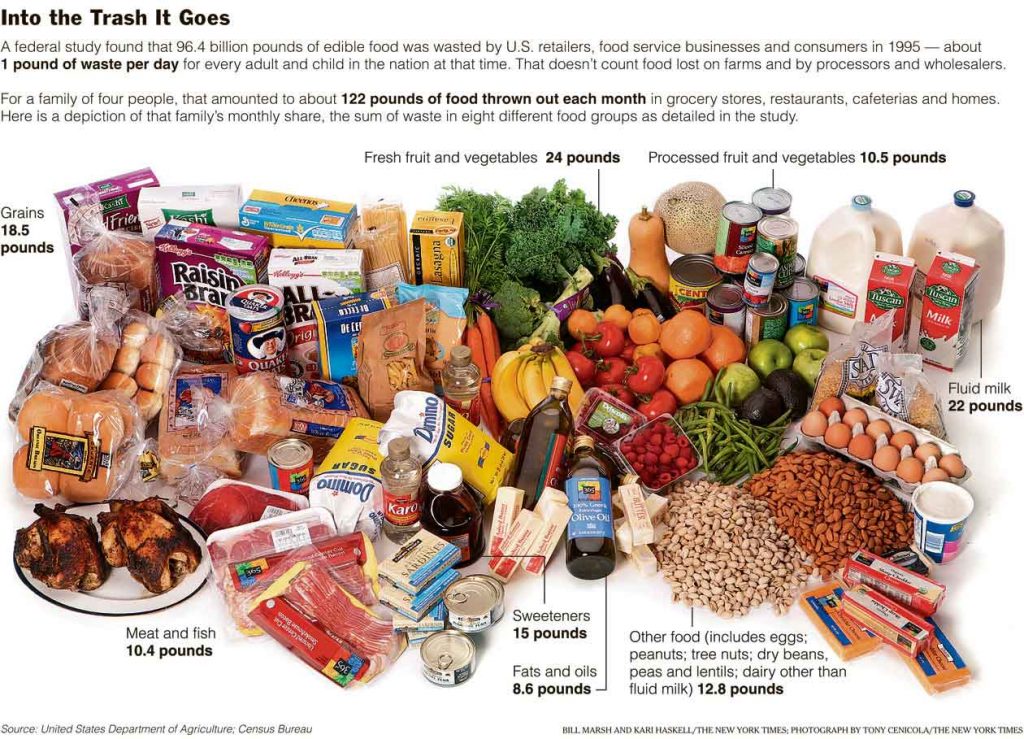
122 lbs. That’s how much enters the waste stream each month from the average American home (family of four). Ridiculous, sad, and incredible at the same time, isn’t it? A study conducted in 1995 estimated that 96.4 billion pounds of edible food was wasted each year — not to mention all of that probably went straight into the landfill. Imagine the recycled compost that could be generated from that!
The fascinating graphical representation of our monthly waste, as created by the NY Times, is shown below. Click on it to be taken to a much higher res, readable version.
